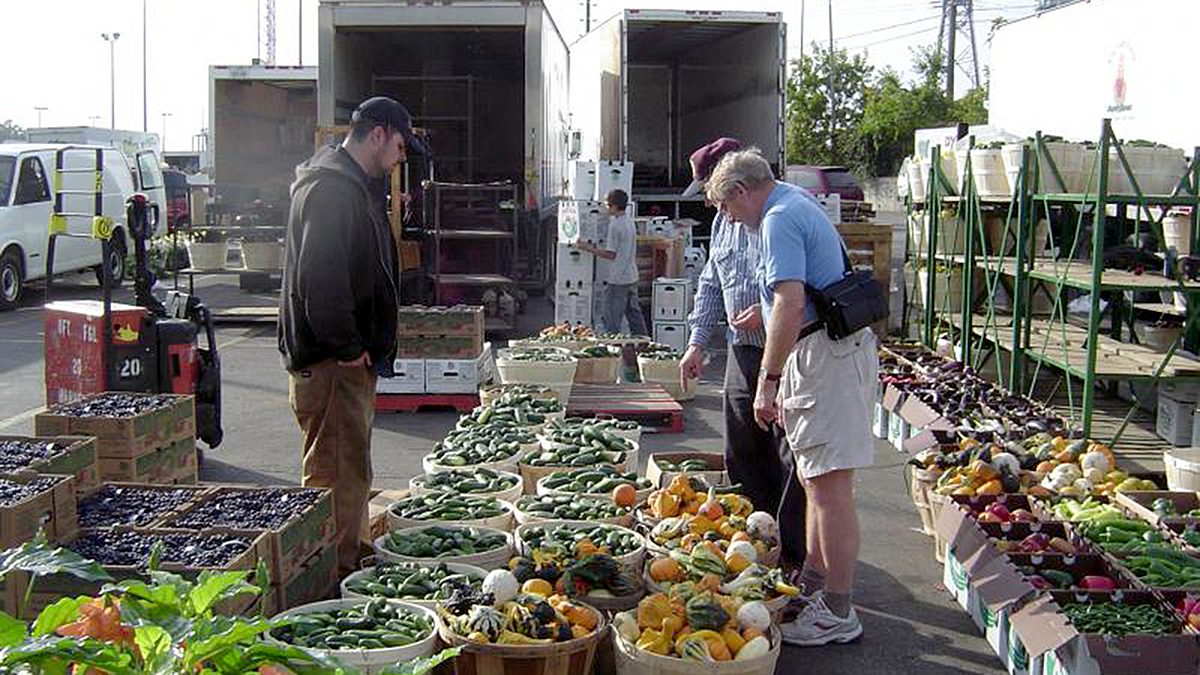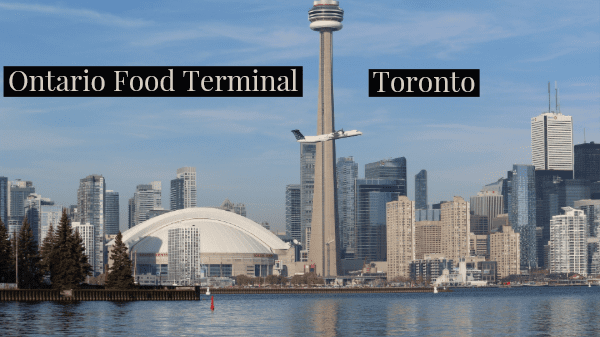Long before dawn, buyers arrive to walk the farmers market and the wholesale area at the Ontario Food Terminal in Toronto.
Daily purchases are delivered to the receiving area to be counted and checked for quality. Skids are loaded at the docks and trucks drive off to the stores, restaurants, and other destinations.
A few years ago, the OFT went through some renovations, including enclosing the dock system to better meet food safety and cold chain requirements. Warehouse tenants deliver directly to trucks via the closed dock system.


The renovated buyers’ court also features a covered loading corridor for smaller vehicles, providing complete protection from the weather. This covered area was recently extended into the farmers market, creating 82 new covered loading spaces for farmers market buyers.
Additionally, the OFT Board is proposing a 50,000-square-foot covered facility where growers can market their produce to buyers through 24 loading docks with glazed doors and dock seals to be fully integrated with the existing loading system.
While there had been speculation that the terminal might move, Ontario Agriculture Minister Ernie Hardeman said in July on local television that the terminal is not moving from its location in Etobicoke.
Gary Da Silva, operations manager of the OFT, is proud of the market’s unique attributes, which include the 100,000-square-foot centralized cold storage facility.
And that’s not all that makes the OFT special.
Lindsey Day Farnsworth, PhD, is a postdoctoral fellow at the Center for Integrated Agricultural Systems at the University of Wisconsin-Madison and is a big fan. She also happens to be an expert on produce terminals.
“The Ontario Food Terminal is spectacular; it truly is the gold standard for food terminals in the way it is structured and run.”
Not only can buyers shop around from house to house, but the OFT lets them do so efficiently, as it is considered as one of the best designed produce terminals in North America. And despite its pace and continual traffic, Farnworth praises the “tremendous thought” put into safety mechanisms.
“Consumers benefit from the OFT in terms of quality, pricing, and diversity of retail options, but because these facilities operate largely behind the scenes, they are vulnerable to budgets cuts,” Farnsworth said.
“For me, the question is: how can we raise the profile of this crucial infrastructure, which is so important to our food system and our food economy, so it isn’t so vulnerable to short-sighted, balance sheet decision-making?”



